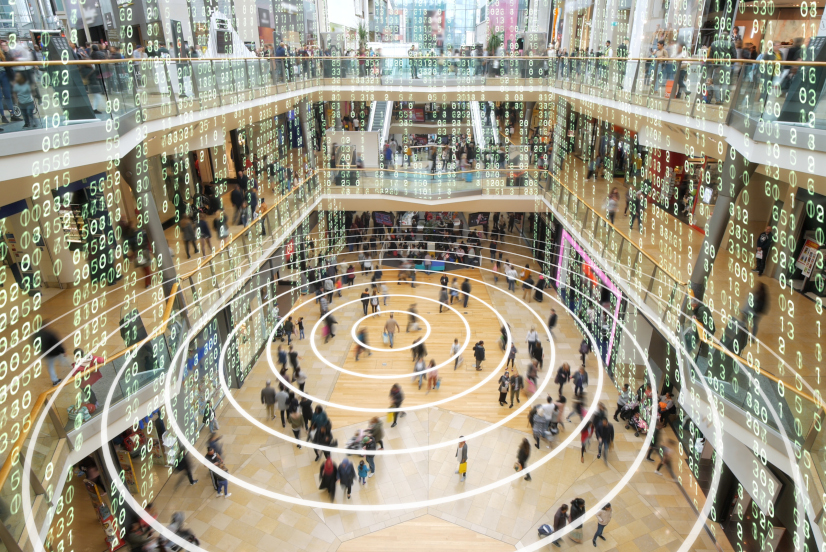Despite major disruptions in recent years, shopping centres and retail parks have shown themselves to be incredibly resilient. For example, as shops re-opened after the pandemic, retail parks and shopping centres rebounded much faster than other bricks and mortar retail businesses. A significant part of this resilience comes from their ability to adapt. And that adaptability is only possible thanks to effective shopping centre management.

Retail parks and shopping centres have invested heavily in upgrading their sites to meet modern consumer expectations. Whether it is through the creation of experience-based shopping, click and collect services, or ‘pop up’ shops, the owners of these sites are repurposing space to offer the services and facilities that leaseholders and consumers now expect.
But it’s not all plain sailing. Let’s look at some of the key shopping centre management challenges in 2022, and how property managers can address them.
Related reading: Find out how PlanRadar gives you smart insights for optimised real estate property management
5 key shopping centre management challenges
Shopping centre property management has continually evolved ever since the first malls and retail parks emerged in the 1960s. In the early days, shopping centre management was relatively straightforward; so long as the estate was clean and buildings maintained, investors could expect healthy returns. Today, however, the shopping centre management role has become much more complicated – as the following five challenges demonstrate.
-
Fast-changing spatial demands
Perhaps the biggest challenge for the retail sector today is the incredibly rapid change in expectations of leaseholders. No longer do retailers simply consider square footage and location when selecting retail space. Instead, they’re looking for highly flexible units that adapt to shifting consumer demands.
For example, stores today are offering click and collect services (which requires different parking layouts and footfall patterns), the installation of new equipment such as delivery collection points, or flexible floor plans to create ‘experiences’ in-store. At the same time, consumers are visiting shopping centres and retail parks for different reasons. Shoppers today expect a wider variety of restaurants, gyms and supermarkets than was the norm in the past.
These fast-changing spatial demands pose major challenges for shopping centre management. Site operators need to find ways to continually adapt their property portfolios and offer flexible solutions.
-
Drive for greater efficiency
Another significant challenge for the shopping centre management role is the need to drive efficiency across multiple sites. The combination of online competition, the pandemic and a tight labour market means that profit margins are thinner than before. Retail management companies, therefore, need to find efficiencies – be that organising staff, cutting costs, or using automation.
Recommended: 7 kinds of retail management software you should be using
-
Managing subcontractor relationships
Shopping centre management companies are increasingly contracting out tasks such as cleaning, maintenance, or security to third party providers. This is largely tied to the growing consolidation of the retail park and shopping centre management sector. Working with subcontractors who can cover multiple sites is usually more efficient and flexible than doing everything in-house.
When working with multiple subcontractors, however, it’s more difficult to gauge what work has been done and to validate the quality of that work. It is therefore essential to find effective ways of working with multiple suppliers from different companies.
-
Upgrading older shopping centre infrastructure
One of the biggest challenges for the retail sector relates to upgrading large, geographically distributed portfolios to meet the needs of modern leaseholders and consumers. Especially in portfolios with older retail parks and shopping centres, management companies must find ways to securely upgrade infrastructure to be more energy-efficient, secure and resilient to climate change.
-
Lack of clarity over sites
In the highly competitive retail industry, shopping centre management businesses know that to gain an edge they need a clearer understanding of who is visiting their centres. They also need insights into what they are doing there and what the overall health of their sites is like. Unfortunately, many retail property management firms do not yet have access to real-time data and analytics.
By getting better access to data from sensors, site managers and building plans, retail management companies can get a clearer idea of how people use their sites and make more informed decisions about future investment.
Read more: The digital transformation of estate management
Digitalization will transform shopping centre property management
Major retail management companies are already using digital technologies to improve how they run the sites in their portfolios. Shopping centre management software helps major investors, developers and property management businesses by giving them tools to improve site operation. With PlanRadar, for example, you get:
- A single view of your portfolio: From our desktop and mobile application, you are able to view the blueprints and building plans for all your retail parks and shopping centres in a single place.
- Subcontractor management: PlanRadar lets you allocate tasks to subcontractors, validate that work has been completed, manage projects and communicate with staff and subcontractors easily.
- Manage projects: With our shopping centre management software, you have a centralised way of managing projects such as site upgrades and viewing real-time data.
- Cut out inefficiencies: From organising people’s schedules to eliminating paper and clipboard-based task management, using PlanRadar lets you run a leaner operation.
Learn more about how PlanRadar supports shopping centre management, or read how our tool is being used by British Land to manage their retail parks and shopping centres.


